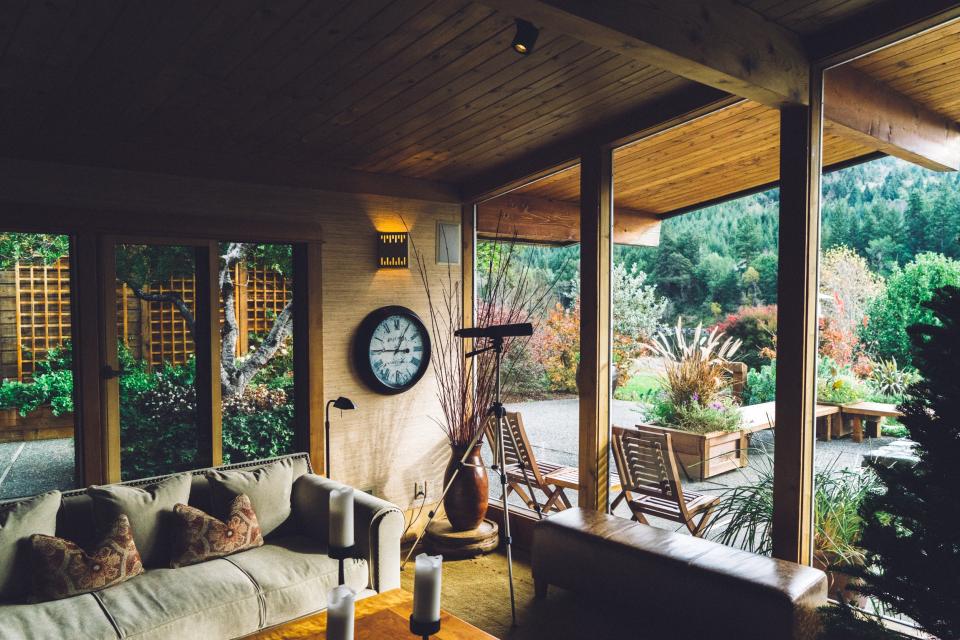Author: Igor Nastaskin
The Facts (and Myths) on Down Payments and PMI
Thinking about buying a home and worried about your down payment? You’ve likely heard the rule of thumb about not purchasing a home unless you can put 20 percent down. Before accepting this myth, Freddie Mac suggests doing your homework, weighing the pros and cons regarding your down payment options, and separating the facts from the myths. Fact or myth? The more you put down, the lower your monthly mortgage payment will be and the less you’ll owe the bank. Fact: It’s a simple numbers game— the more you pay now, the less you pay monthly during the life of the mortgage. However, if putting 20 percent down is not an option or will deplete all your savings and leave you with no financial cushion, it’s probably not in your best interest. Fact or myth? Your down payment must come from your own savings. Myth: Your down payment can come from a number of sources, including personal funds, gift funds, grants and affordable second mortgages. In addition, many state, county and city governments provide financial assistance for people in their communities who are well-qualified and ready for homeownership. Fact or myth? A growing number of borrowers are putting down less than 15 percent. Fact: The average down payment among first-time homebuyers in 2016 was 6 percent, and 14 percent for repeat buyers. You can even put down as little as 3 percent through mortgage options such as the Freddie Mac Home Possible Advantage mortgage. Fact or myth? Homebuyers who put down less than 20 percent have to pay Primary Mortgage Insurance (PMI), an added insurance policy that protects the lender if you are unable to pay your mortgage. Fact: Although you’ll have to pay PMI for a conventional loan with a down payment of less than 20 percent, you still will be able to take advantage of the 30-year fixed rate mortgage that can offer you security and peace of mind throughout the life of your loan.
Three Tips for Selling an Eco-Friendly Home
Eco-friendly features can help a home stand out in a competitive real estate market, especially to environmentally conscious homebuyers. In addition to the promise of lower electric bills, green upgrades such as installing a solar energy system on the roof actually can increase the resale value of a home. According to a study by the Lawrence Berkeley National Laboratory, part of the U.S. Department of Energy, installing solar panels adds an average of $20,000 to a solar home’s value. Other “green” and energy-efficient home upgrades also increase the selling price of a home—in California, homes with green labels sell at an average price premium of 9 percent. Here, Redfin offers a few tips that can help you get the most out of your eco-friendly investments when listing your home. 1. Advertise the many different value propositions of a “green” home The same eco-friendly home feature will attract different homebuyers for different reasons. Some prospective homeowners may be interested in the environmental benefits that green homes offer, such as reduced greenhouse gas emissions and sustainably-sourced materials. Others may be motivated by the financial benefits that result from eco-friendly upgrades such as solar. A home with green upgrades also can be a selling point simply because it means that homebuyers won’t have to spend time or money to update the property themselves. Be sure to advertise all of these different value propositions in your home listing to make sure you’re attracting as wide a pool of potential buyers as possible. Communicating the many benefits that your green home offers will ensure that you see strong financial returns on the eco-friendly upgrades you make to your home. 2. Get specific! Highlight tangible benefits to homebuyers In addition to their environmental benefits, eco-friendly home upgrades can result in tangible benefits for prospective buyers. For example, solar panels provide a very real financial incentive in the form of dramatically reduced electricity bills. Other energy-efficient home upgrades offer similar financial savings. In your home listing, sales materials and elsewhere, make sure to use specific numbers that communicate the economic value of your home’s green upgrades to prospective buyers. For example, if your solar panels reduced your electricity bills by 90 percent last year, or your energy-efficient HVAC system cut your winter heating costs in half, share that information as clearly as possible. There are a number of independent programs that offer “green labels” to verify your home’s eco-friendly characteristics. Educated homebuyers who are interested in green homes will search for recognizable green labels like the LEED certification when shopping online. If your home recently went through an energy efficiency upgrade, you also can share its HERS Index rating in your property listing. 3. Make your real estate agent your biggest “green” advocate Environmentally friendly home upgrades are a worthwhile investment that can pay off in no time, but they don’t always come cheap—for example, solar panel costs can range from $10,000 to $15,000 for an average-sized solar panel installation. Even if you already appreciate all of the benefits that these eco-friendly upgrades offer, make sure your real estate agent understands the competitive advantages that make your green home stand out from the crowd. This also extends to the real estate appraiser that evaluates your home’s value. For instance, if you want to ensure that your home’s listing price includes the value of your solar energy system, consider using a tool such as PV Watts to calculate the specific dollar value of your solar PV installation. Taking these simple yet effective steps will help ensure that selling your eco-friendly home is as successful as possible.
Seven Inexpensive Landscaping Ideas That Will Pay Off Later
A home with a gorgeous yard isn’t just easy on the eyes. According to research conducted by Virginia Tech, well-landscaped homes also sell for 5.5 percent to 12.7 percent. The only problem is, professional landscaping costs an average of $3,219, according to HomeAdvisor.com. But pros aren’t the only way to go. Here, Realtor.com offers seven inexpensive landscaping ideas. 1. Show your lawn a little TLC While overgrown plants and weeds can make a home look run-down, a well-manicured lawn signals to prospective home buyers that the house is maintained well inside as well. So, start by cutting the grass, trimming shrubs and pruning hedges. Buried in weeds? Try using this homemade weed killer: Mix white vinegar, one-to-two cups of salt (table or Epsom) and a small squeeze of dish detergent. 2. Install drought-tolerant plants One-third of all household water use typically goes to landscaping, according to the Environmental Protection Agency. It’s no surprise, then, that sustainable design (yards that require low maintenance and less water) is one of the hottest trends in residential landscaping, according to a recent survey by the American Society of Landscape Architects. Don’t want to spend thousands of dollars on a new irrigation system? Invest in some easy-care, drought-tolerant plants such as coneflowers, lantanas or yarrows. Their ability to survive in dry conditions and minimal need for water can be nice selling points to home buyers. Easier for you, too. 3. Find free mulch Laying down fresh mulch in a flowerbed or around the base of trees can make a yard instantly more appealing. Not only does this layer of bark and compost enrich the soil, it also looks far nicer than bare dirt. Unfortunately, purchasing mulch can drag down your budget. Even if you buy it in bulk, mulch costs between $15 and $65 per cubic yard. But why pay for mulch when you can get it for free? Many cities offer free mulch to residents. Check with your local government to see if there’s a program available in your area. You’ll need to rent your own truck if you want to load up, but doing so is another way to cut your landscaping expenses, since mulch delivery can cost between $354 and $1,093. 4. Use gravel or granite instead of concrete Concrete—for driveways and sidewalks—may be the go-to for many homeowners, but it’s also expensive, costing $98 per cubic yard. So, go for the less expensive option of pea gravel, which costs drastically less, at $30 to $35 per cubic yard. Even cheaper? Decomposed granite, which costs only about $3 to $5. 5. Buy plants in bulk While you don’t need a wide array of foliage to make your landscaping shine, a select few can do wonders and save you cash. By choosing three varieties of plants for your garden instead of 10, you can buy in bulk and often save money. Some nurseries even offer discounts of 15 percent to 30 percent on the purchase of five or more of the same plant. 6. Brighten up outdoor lighting Many home buyers schedule viewings at night, since they work during the day. Therefore, you need to be mindful of how your home’s exterior appears at night. That doesn’t mean that you need to hire a contractor to install an outdoor lighting system, which HouseLogic.com estimates can cost on average $4,925. Just make sure that all of the current light fixtures have working lightbulbs. For optimal brightness, use lightbulbs with the highest wattage possible (based on safety guidelines). The caveat: Keeping the outdoor lights on at night will bump up your electric bill; however, having a well-lit exterior will help your house make a great first impression. Put simply, it’s worth the extra expense. 7. Hire a landscaper… for free Landscape architects typically charge $70 to $150 an hour. However, many local garden centers provide landscaping consultations for free or for a small additional cost if you buy plants from them. In other words, you may not need to pay a penny to get landscaping advice from a professional.
Six Ways to Win a Bidding War
A hot spring market fueled by high demand and low inventory has emerged in 2017. Buyers are doing their best to stay ahead of rising interest rates, but often are confronted with short time frames to view properties and end up competing against multiple offers. Here, U.S. News & World Report offers six strategies for creating the strongest offer in a competitive home-buying situation. 1. Access the comps During your home search process, you’ve gained a strong understanding of the market and how far your dollar will go by viewing homes and following their prices. Now that you’ve zeroed in on a specific house, take the time to review the most recent comparable sales with your agent to determine its actual value. Think of market value as a bubble, spanning a small spectrum of prices. On the back end of the bubble, you are getting the house at a great price—indicative of a buyer’s market. The front end is the top dollar you would pay for the home without overpaying—a perfect example is today’s seller’s market. The sweet spot in the middle is a price representative of a mutually beneficial price. While preparing the offer, assess the comps and determine what part of the bubble you are willing to pay for the house. Be sure to set your expectations accurately considering the perceived demand for the house as well as local market trends. 2. Ask questions Don’t assume the sale price is the end-all-be-all for the sellers. Have your agent find out where their priorities lie before constructing your offer. Depending on their life situation, previous real estate experiences and other important factors, there may be other ways to provide strength to your offer. One example is to find out their ideal settlement time frame. While some sellers like to be out as soon as possible, others may want a longer timetable or lease-back to accommodate the purchase of their next house. 3. Have your deposit and financing in order Again, the strength of your offer is made up of many factors. The deposit is one area you may be able to fortify by increasing the amount, showing the seller you’re willing to put your money where your mouth is. Talk with your lender to find out what loan options are available. It is imperative you don’t overextend or put yourself in a financially perilous situation. That said, there are certain mortgage programs that a seller will find more attractive than others. Be responsible and financially knowledgeable to put yourself in the best position possible, both short and long-term. 4. Include an escalation clause An escalation clause can be added to the offer to incorporate incremental jumps in price above the highest offer. There is a cap in place to dictate just how far you’re willing to go. An escalation clause is an excellent tool to span the “fair market bubble,” as it allows you to be highly competitive while not paying more than necessary. For example, if there are three bids on a property listed for $500,000, you can write a full-price offer with an escalation up to $525,000 that increases in $5,000 increments. If the second-highest offer is $510,000, you would only have to pay $515,000. Why wouldn’t you want to make the increments as small as possible? You don’t want to allow consideration for any other factors the second-best offer may include, such as financing or a better settlement time frame. 5. Write a letter Although we often look at an offer objectively when deciding what makes the most sense, there always is another human being on the other side of the transaction, foreclosures excluded. Recognizing the history of the property and telling the seller how you will build on it is an excellent way to set yourself apart. A well-written note can tug at the owner’s heartstrings and tilt the scales in your favor. Focus on what drew you to the house and what left the greatest impression. Be specific when you identify factors that set it apart from all the others you viewed and gave you that aha moment. Don’t tell the seller what was wrong with the property or what you’d do to improve the property, but explain how you plan to make it your home. It’s OK to play the growing-family card or any others you have. It is not advisable to include a picture. While this has nothing to do with how good-looking you are, it has everything to do with violating fair housing laws. You don’t want the seller to feel any pressure one way or the other in their decision based on any of the protected classes—race, color, national origin, religion, sex, disability or family status. 6. Breathe This may be the most beneficial (and overlooked) factor of all. Fast-paced seller’s markets often can cause frustration and anxiety that leads to poorly thought out, rambunctious decisions and buyer’s remorse. Be sure to take a step back and analyze your thought process, decision and the short- and long-term ramifications. Rather than letting your competitive nature or emotional attachment to the property get in the way, take a moment to breathe and collect your thoughts before submitting your offer. This will help ensure your aha moment doesn’t become an “oh no” moment six months later.
Home Staging Decreases Time on the Market
Sixty-two percent of sellers’ agents say that staging a home decreases the amount of time a home spends on the market, according to the National Association of Realtors’ 2017 Profile of Home Staging. “Realtors know how important it is for buyers to be able to picture themselves living in a home and, according to NAR’s most recent report, staging a home makes that process much easier for potential buyers,” says NAR President William E. Brown. “While all real estate is local, and many factors play into what a home is worth and how much buyers are will to pay for it, staging can be the extra step sellers take to help sell their home more quickly and for a higher dollar value.” According to the report, nearly two-third of sellers’ agents said that staging a home decreases the amount of time the home spends on the market, with 39 percent saying that it greatly decreases the time and 23 percent saying it slightly decreases the time. Sixteen percent of sellers’ agents believe that staging either greatly or slightly increases a home’s time on the market, while 8 percent believe that it has no impact. Seventy-seven percent of buyers’ agents said that staging a home makes it easier for buyers to visualize the property as their future home, and 40 percent are more willing to walk through a staged home they first saw online. However, 38 percent of buyers’ agents said that staging positively affects a home’s value if the home is decorated to the buyer’s taste, meaning that a home’s staging should be designed to appeal to the largest number of potential buyers. Forty-nine percent of buyers’ agents said that staging has an effect on most buyers. Another 48 percent stated that staging has an effect on some buyers’ opinion of a home, but not always, and only 4 percent said that it has no impact on buyers. Realtors representing both buyers and sellers agreed that the living room is the most important room in a home to stage, followed by the master bedroom, the kitchen, and then the yard or outdoor space. The guest bedroom is considered the least important room to stage. The highest share of buyers’ agents (31 percent) reported that staging a home increases its dollar value by 1 to 5 percent. Thirteen percent said that staging increases the dollar value 6 to 10 percent, while 25 percent stated it has no impact on dollar value. Only 1 percent of buyers’ agents felt that staging has a negative impact on a home’s dollar value. Sellers’ agents report even more value is added from staging: 29 percent reported an increase of one to five percent in dollar value offered by buyers, 21 percent reporting an increase of 8 to 10 percent and 5 percent reported an increase of 11 to 15 percent. No sellers’ agents reported a negative impact. When deciding which homes to stage, 38 percent of sellers’ agents said that they stage all of their sellers’ homes before listing them, 14 percent will stage only homes that are difficult to sell and 7 percent stage only homes in higher price brackets. Thirty-seven percent of sellers’ agents said they do not stage homes before listing them, but they recommend sellers declutter their homes and fix any faults with the property. When it comes to paying for home staging, 25 percent of the time the seller pays before listing the home. Twenty-one percent of sellers’ agents will personally provide funds to stage the home, while 14 percent of agents will offer home staging services to sellers. Beyond staging, agents also named the most common home improvement projects they recommend to sellers: Ninety-three percent recommend decluttering the home, 89 percent recommend an entire home cleaning and 81 percent recommend carpet cleaning. Other pre-sale projects include depersonalizing the home, removing pets during showings and making minor repairs.








